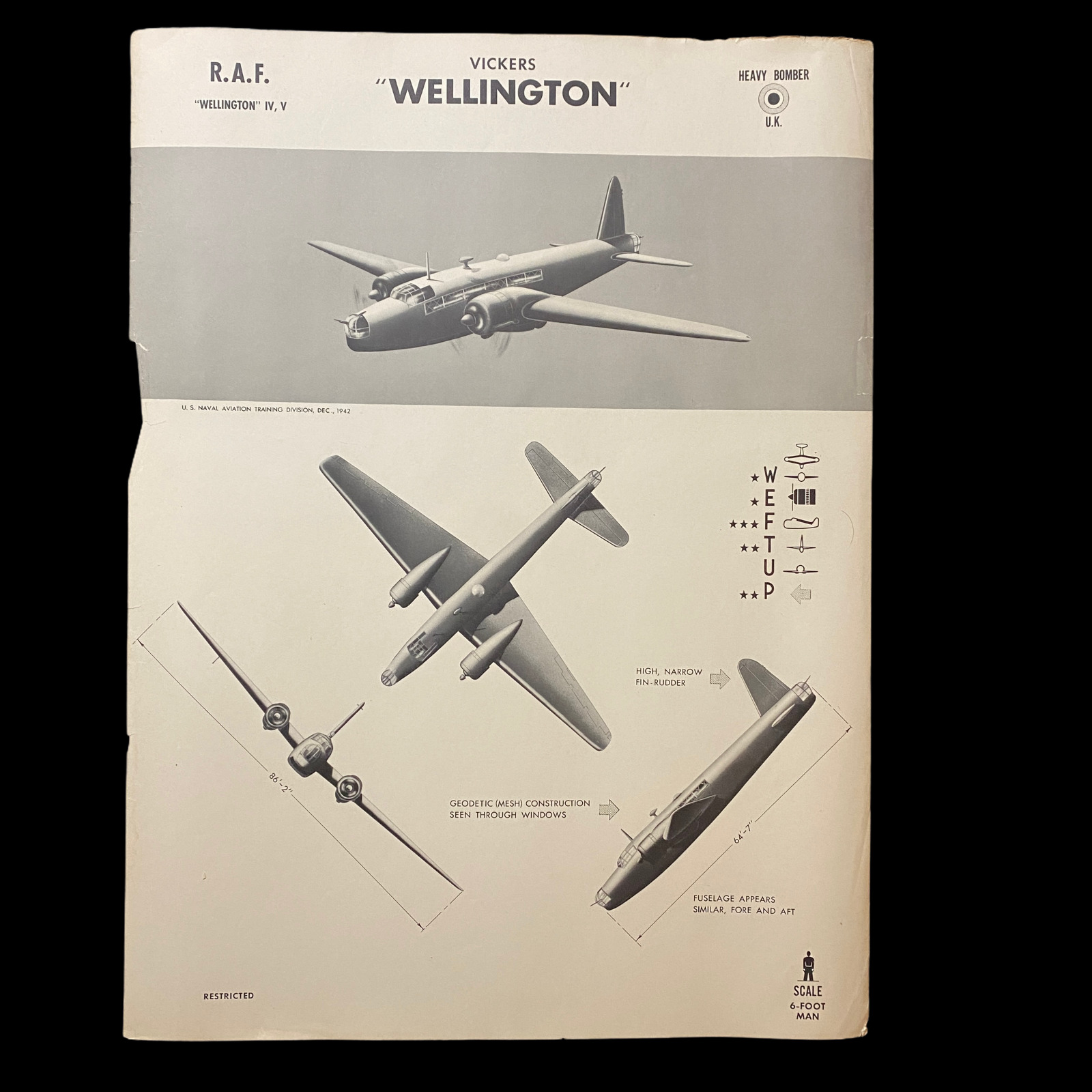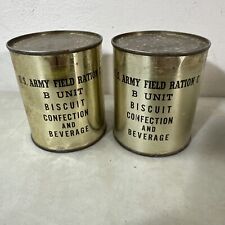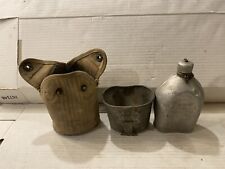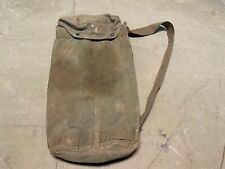When you click on links to various merchants on this site and make a purchase, this can result in this site earning a commission. Affiliate programs and affiliations include, but are not limited to, the eBay Partner Network.
Size: 19 x 25 inches
This original ‘RESTRICTED’ aircraft identification poster was published by the U.S. Naval Aviation Training Division Nov 1942. This poster was posted as a training tool as well as an in theater ID poster to help U.S. and other Allied pilots, bomber crews and Naval personal to identify Allied and enemy aircraft. W.E.F.T.U.P. or Wing, Engine, Fuselage, Tail, Undercarriage, Peculiarities was a system set up for the purpose of aircraft identification and recognition.
World War II saw some of the first introduction of these aircraft ID poster to prevent friendly fire and more accurate plane recognition in combat. It was believed these posters alone could save countless lives from friendly aircraft-on-aircraft or friendly anit-aircraft fire. These posters also could cut down precious second pilots, bomber gunners, and naval gun crews would have to ID a plane flying towards them intern saving their lives by shooting first.
Each poster provides the silhouettes, dimensions, and relevant information to educate both air and ground personnel in aircraft identification. Immediate identification of aircraft, friendly or not, was essential in order for the observer (whether in the air e.g., pilot, gunner, or patrol observer, or on the ground, e.g., anti-aircraft crew) to determine his next course of action (e.g., acknowledge, attack, evade, or report). Each poster details a large clean sky and background image of the specified aircraft located as the main top imagine on the poster. It also contains important ‘peculiarities’ such as where certain gun emplacements are located, other special aircraft features, as well as wing and length measurements.
Vickers Wellington:
TheVickers Wellingtonwas a British twin-engined, long-rangemedium bomber. It was designed during the mid-1930s atBrooklandsinWeybridge, Surrey. Led byVickers-Armstrongs\' chief designerRex Pierson; a key feature of the aircraft is itsgeodetic airframefuselage structure, which was principally designed byBarnes Wallis. Development had been started in response toAir MinistrySpecificationB.9/32, issued in the middle of 1932, for a bomber for the Royal Air Force.
This specification called for a twin-engined day bomber capable of delivering higher performance than any previous design. Other aircraft developed to the same specification include theArmstrong Whitworth Whitleyand theHandley Page Hampden. During the development process, performance requirements such as for thetare weightchanged substantially, and the engine used was not the one originally intended.
The Wellington was used as anight bomberin the early years of theSecond World War, performing as one of the principal bombers used byBomber Command. During 1943, it started to be superseded as a bomber by the larger four-engined \"heavies\" such as theAvro Lancaster. The Wellington continued to serve throughout the war in other duties, particularly as ananti-submarine aircraft.
It holds the distinction of having been the only British bomber that was produced for the duration of the war, and of having been produced in a greater quantity than any other British-built bomber. The Wellington remained as first-line equipment when the war ended, although it had been increasingly relegated to secondary roles. The Wellington was one of two bombers named afterArthur Wellesley, 1st Duke of Wellington, the other being theVickers Wellesley.









